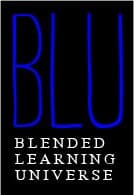Blended learning has enormous potential to fuel education transformation.
Because we believe in that potential and know that a shared language and understanding of this new phenomenon and its evolution are important, our team at the Clayton Christensen Institute has carefully crafted definitions around the nascent field. We have provided a taxonomy framework to help classify the different blended-learning models that are appearing in schools around the world. We have analyzed the rise of K-12 blended learning through the lens of disruptive innovation, most recently delineating between sustaining and disruptive models.
But what does blended learning really look like?
What are the mechanics of different models in action? What edtech products are different types of schools using? What kind of results are different programs yielding? What have been the obstacles in implementation for practitioners serving students from different demographics?
To help answer these questions, our team has created the beta Blended Learning Universe (BLU), a rapidly growing database of profiles of diverse blended-learning programs. Though the sample size is still relatively small, this resource helps inform where and how blended learning is taking root. This collection of brief case studies provides a window into what blended learning really looks like on the ground.
Our hope is that this tool informs policymakers, connects practitioners, and helps educate the public to dispel myths about blended learning. Additionally, our team uses the data gathered to inform our continued work fine-tuning definitions and taxonomy. As implementation of blended learning continues to expand, and as our collection of profiles continues to grow, we aim to provide a robust resource – a whole universe of rich data – to do the essential and yet unfulfilled work of showing key stakeholders and the general public what blended learning really looks like.
Each BLU profile includes statistics about student population and school characteristics, information about software and hardware used, and brief descriptions of a program’s online and offline components, teacher roles, physical-space use, and academic results. Each profile provides a quick snapshot of the mechanics of a program; some profiles include videos; and most profiles list contact information to allow educators to get in touch with each other to learn more and collaborate.
The BLU landing page includes multiple search options to allow readers to explore the profiles in a variety of ways depending on their interest. For example, one interested in new charter schools could sort profiles by school/organization type and by first year of operation. Another user could filter search results by blended-learning model, by edtech tools used, or by program focus. Or a practitioner could look for a program like their own by searching around blended grades or subjects. A map feature allows readers to see where these profiled schools/organizations are located. We’re continuing to iterate to improve all elements of the Universe, including seeking to partner with other organizations to deliver a more integrated, more robust resource.
Indeed, the BLU can help policymakers catch a glimpse of different types of blended-learning implementations happening in their states. Through this database, educators and administrators currently practicing blended learning can connect with other practitioners around challenges and products, and those hoping to incorporate blended learning in the future can explore different strategies among different demographics. Anyone interested in blended learning – students, parents, funders, advocates, skeptics – can come to the BLU to take a peek into this new and exciting universe of innovation poised to change the world.
What does blended learning really look like? Check out the Blended Learning Universe to see for yourself.
Blended-learning practitioners can contribute data to the Blended Learning Universe. Doing so helps bolster this important work of informing, connecting and clarifying, and also provides an opportunity for schools and organizations to have their work highlighted to the BLU’s growing audience. Create a profile by completing our online form, or by participating in a brief interview with a member of our team. Click here to submit data online, or to set up an interview to discuss your program, click here to email Mike Lemaire.


